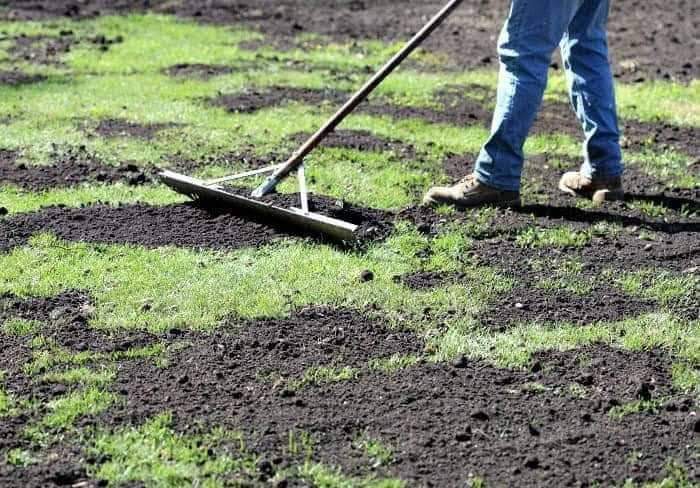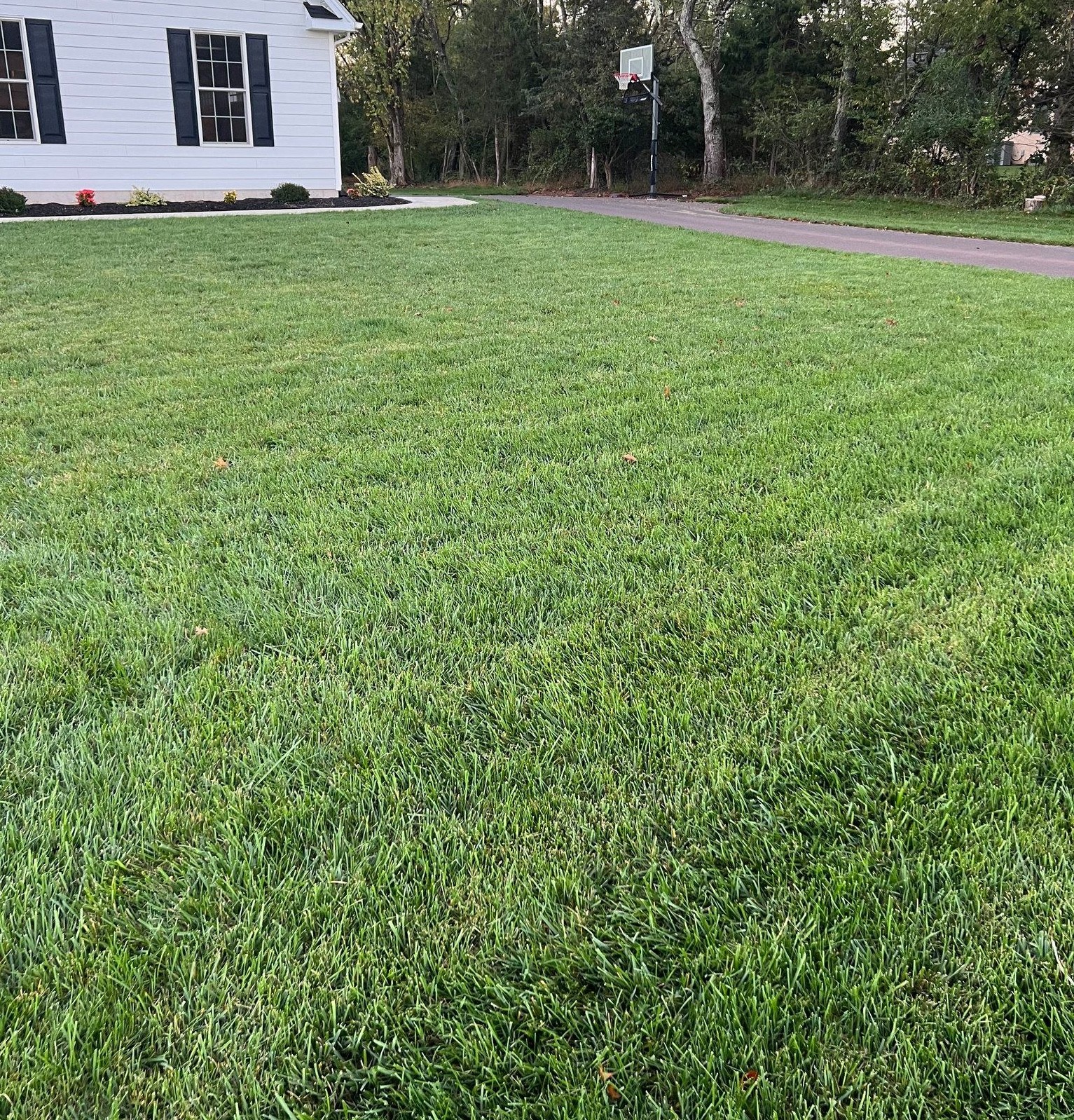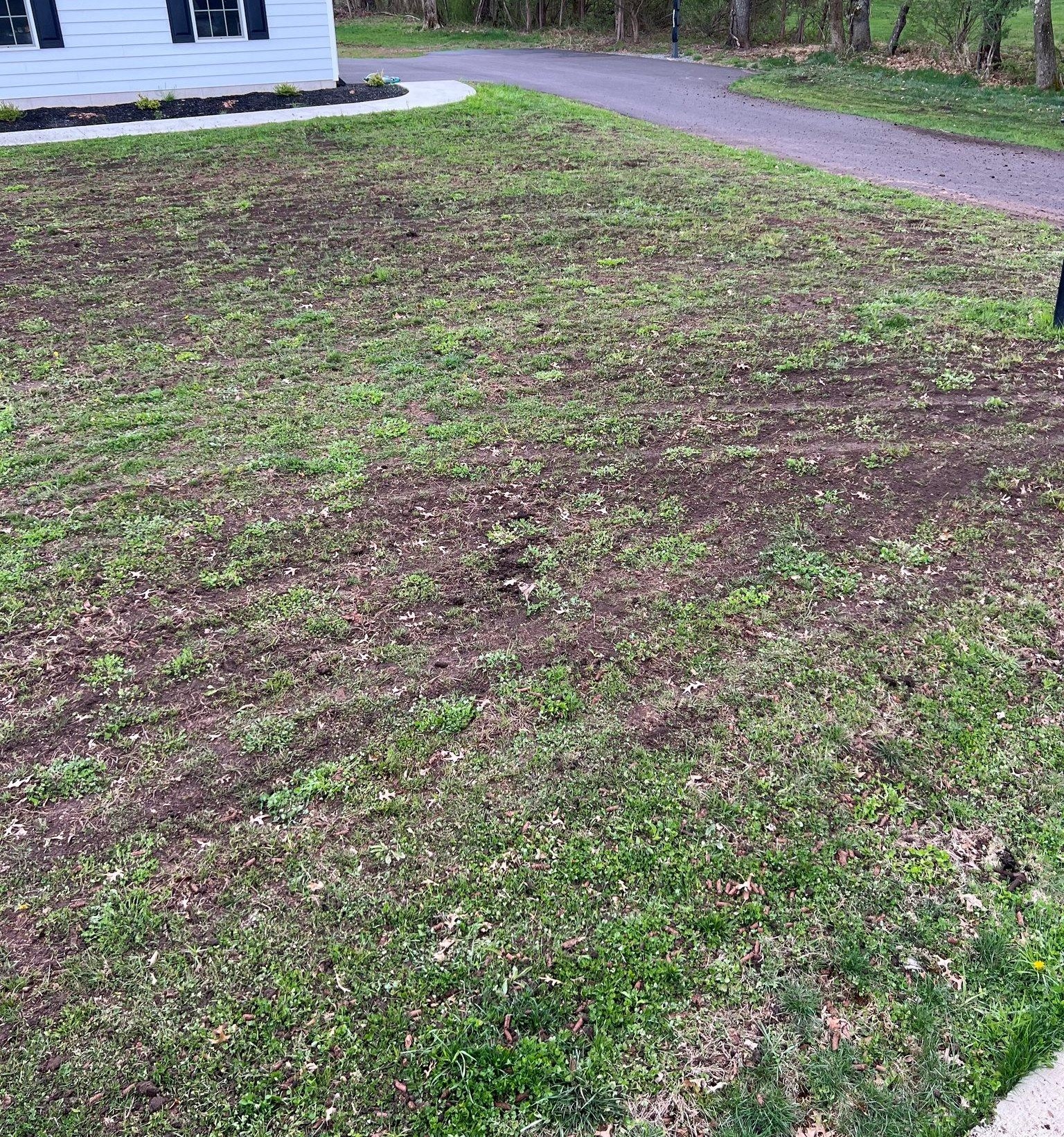Imagine stepping out into your lawn, and instead of a patchy, lackluster lawn, you’re met with a lush, vibrant carpet of green that feels heavenly on your feet. Achieving your dream lawn isn’t impossible. Try lawn top dressing.
This practice can be your ticket to a lawn that your neighbors will envy and the satisfaction of walking on a genuinely luxurious lawn. So, let’s delve into the benefits of topdressing your lawn and unveil the steps to do it effectively.
Continue reading to discover the hidden magic of topdressing a lawn.
What Is Lawn Topdressing?
Lawn top dressing refers to a gardening and lawn care technique that involves spreading a thin layer of specially prepared soil mixture over an existing lawn.
This soil mixture typically consists of a combination of materials such as organic matter (like compost), sand, and other soil amendments.
Topdressing is done primarily to improve the quality and health of the lawn by addressing several common issues that can affect the appearance and vitality of the grass.
This practice originated in ancient agricultural practices, with farmers applying manure, compost, or other organic materials to their fields to enrich the soil and enhance crop yields.
These early agricultural practices laid the foundation for the concept of amending the soil to promote plant growth. Topdressing became recognized as a beneficial practice for improving grasslands and lawns in the 18th century.
It gained popularity in the United States during the 19th century, primarily in golf courses and estates.
Benefits Of Top Dressing Your Lawn
So, you now know what topdressing is and its origin, but what are its benefits to your lawn?
This valuable practice offers numerous benefits for your grass’ longevity, appearance, and health. Here are the key advantages of top dressing a lawn:
1. Leveling Uneven Terrain
Over time, your lawn can develop low spots, divots, or uneven areas due to factors like foot traffic, settling, or soil compaction. By applying a thin layer of soil mixture, you can fill in low spots, divots, and uneven areas, resulting in a smoother and more uniform lawn.
Leveling a lawn through topdressing also makes it easier to mow and maintain your lawn, enhance drainage, prevent erosion, promote consistent grass growth, and prevent erosion.
Also Read:
- Best Homemade Fertilizers For Lawn
- Lawn Food vs Lawn Fertilizer
- Things You Should Never Do To Your Lawn
- How To Fix Yard Drainage Issues
2. Thatch Reduction
Some thatch is normal and beneficial to your lawn, but excessive thatch can create several problems. It can inhibit nutrient, water, and air penetration into the soil. Excess thatch can also impede soil aeration, provide a favorable environment for lawn diseases and pests, and contribute to soil compaction.
A lawn with too much thatch also looks spongy or lumpy. The upside is topdressing will help break down and decompose thatch, allowing for better absorption of essential nutrients and promoting healthier grass growth.
3. Improving Soil Quality
The soil mixture used for top dressing often includes organic matter and soil amendments, which enrich the soil with nutrients. This enhances the soil’s structure, making it healthier and more conducive to plant growth.
4. Enhancing Lawn Density
Top dressing encourages the development of new grass shoots, thus filling in any sparse or bare areas in the lawn. Eventually, this will result in a denser and more luxurious grass cover.
Read more: How to Overseed a lawn
5. Stimulating Root Growth
The added nutrients from the top dressing mixture encourage deeper roots. This not only improves the grass’s overall health but also makes it more resilient to drought and other environmental stressors.
6. Enhancing Lawn Health
By improving soil quality and reducing thatch, your lawn will become more resilient to diseases and pests. Therefore reducing the need for chemical treatments, hence a more eco-friendly lawn.
7. Improved Drought Resistance
With deeper roots resulting from top dressing, your lawn’s capacity to withstand drought increases. Deeper roots allow the grass to reach water and nutrients lower in the soil, reducing its reliance on regular watering.
8. Long-Term Soil Enrichment
Depending on the top dressing you use, you can enrich your lawn soil, providing lasting benefits to your lawn. It’s a sustainable practice that contributes to long-term soil health.
9. Aesthetic Improvement
Once you top-dress your lawn, it will look more even, lush, and visually appealing. Remember that a well-maintained, healthy lawn can make your property more valuable.
When Is the Best Time to Top Dress A lawn?
You can top-dress your lawn anytime, provided it is during the growing season. However, the best time to top dress your lawn depends on your grass type.
In that case, the best time for top-dressing cool-season grasses like Kentucky bluegrass, fescue, and ryegrass is early spring when the grass is actively growing but before the intense heat of summer arrives. This is usually in the weeks between late March and early April.
Top dressing in early spring allows the grass to recover and grow through the newly applied soil mixture. In addition, it will help address any winter damage and prepare your lawn for the growing season.
You can also top-dress cool-season and warm-season grasses in early fall (usually in September) when the weather is milder and the grass is still actively growing.
Top dressing in the fall helps prepare the lawn for winter by improving root growth and overall resilience.
Early fall top dressing for warm-season grasses, like Bermuda or Zoysia, helps these grasses recover from the stress of the summer months.
Also, since top dressing raises your lawn grade, it would be best to do it once every couple of years. This is because excessively increasing your lawn grade can cause erosion and drainage problems.
Best Material for Topdressing a Lawn
The choice of material you use to topdress your lawn will determine the outcome. So, base your decision on your lawn’s soil condition and lawn care goals. Common materials used for top dressing include compost, sand, and a mixture of the two.
Compost adds organic matter and nutrients to the soil, improves soil structure, enhances moisture retention, and provides a slow release of nutrients to the grass. It especially helps to address soil quality issues and promote overall soil health.
On the other hand, use sand if you need to level the lawn’s surface, correct uneven terrain, address poor drainage or compaction issues, or improve soil structure. A combination of compost and sand is a popular choice for top dressing because it combines the benefits of both materials.
Use a blended mix to improve both soil quality and lawn surface smoothness or when seeking a balanced approach to address various lawn care needs. Also, topdress with a blended mix if your lawn has a mixture of soil issues, such as thatch buildup and uneven terrain.
How to Top Dress a Lawn
Top-dressing your lawn may be labor-intensive and tedious, but it doesn’t mean you cannot manage it. Here’s how to do it correctly.
Tools and Materials
- Top dressing material (compost, sand, or a blend of both)
- A lawn roller or a lawn leveling tool
- Rake or leveling tool
- Shovel or wheelbarrow for spreading the material
- Lawnmower
- Garden hose with a sprinkler attachment
- A soil test kit (optional but recommended)
1) Prepare the Lawn
Mow the grass to a height that removes no more than one-third of the grass blades. This allows for better material penetration and reduces stress on the grass.
2) Choose the Top Dressing Material
Select the appropriate top dressing material based on your lawn’s needs.
3) Calculate the Amount Needed
Determine the amount of top dressing material you’ll need based on the square footage of your lawn. Do so to ensure you purchase the correct quantity of material.
4) Apply the Top Dressing Material
Start by spreading a thin, even layer of the top dressing material over your lawn, ensuring it is no thicker than half an inch. You can do this by using a shovel or a wheelbarrow and spreading the material by hand or with the help of a drop spreader or a broadcast spreader. Ensure even distribution.
5) Spread and Level
Spread and level the material evenly across the lawn with a rake or leveling tool. Work the material into the grass canopy to keep the grass blade tips visible.
6) Water the Lawn
After top dressing, thoroughly water your lawn. Use a garden hose equipped with a sprinkler attachment to ensure an even moisture distribution. Water until the top dressing material is fully settled and integrated with the existing soil.
7) Monitor and Maintain Your Lawn
Keep watch of your lawn’s progress after top dressing. The grass should begin to grow through the new soil layer. Keep up with your regular lawn care routine, which includes mowing and watering as necessary.
Note
While optional, consider conducting a soil test before top-dressing your lawn. Conducting a soil test can assist in identifying the precise nutrient requirements of your lawn and steer you toward selecting the appropriate top dressing material.
Summary
Topdressing a lawn offers numerous benefits, from improving soil quality and reducing thatch to creating a more level, dense, and visually appealing lawn. So, if you want to take your lawn to the next level, consider top-dressing your secret weapon in achieving the lawn of your dreams.

Hey there, I’m Derek Schew, a writer for Lawnholic.com, where we cover everything and anything related to lawns. As someone who’s spent countless hours tending to my own lawn, I’m passionate about sharing my knowledge and helping others achieve the perfect yard. From lawn care tips to product reviews, I’m committed to providing our readers with the most accurate and up-to-date information available. So whether you’re a seasoned lawn enthusiast or just getting started, I invite you to join our community and discover the joys of a lush, green lawn.



